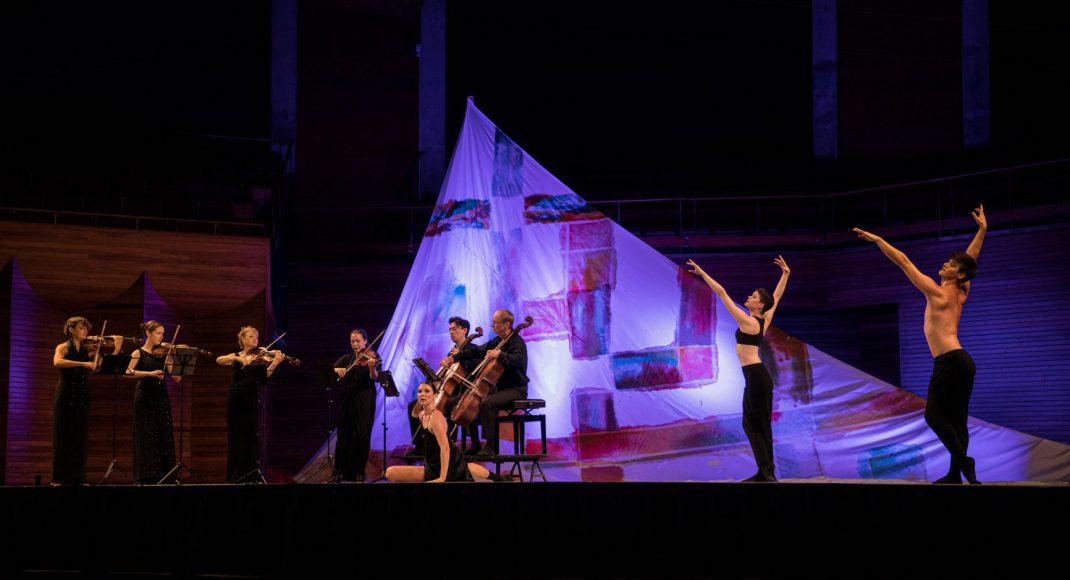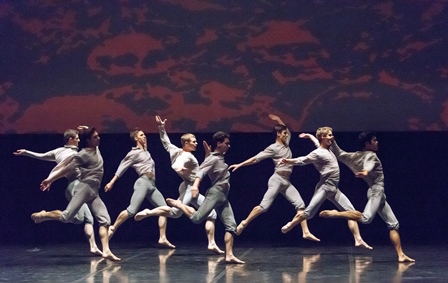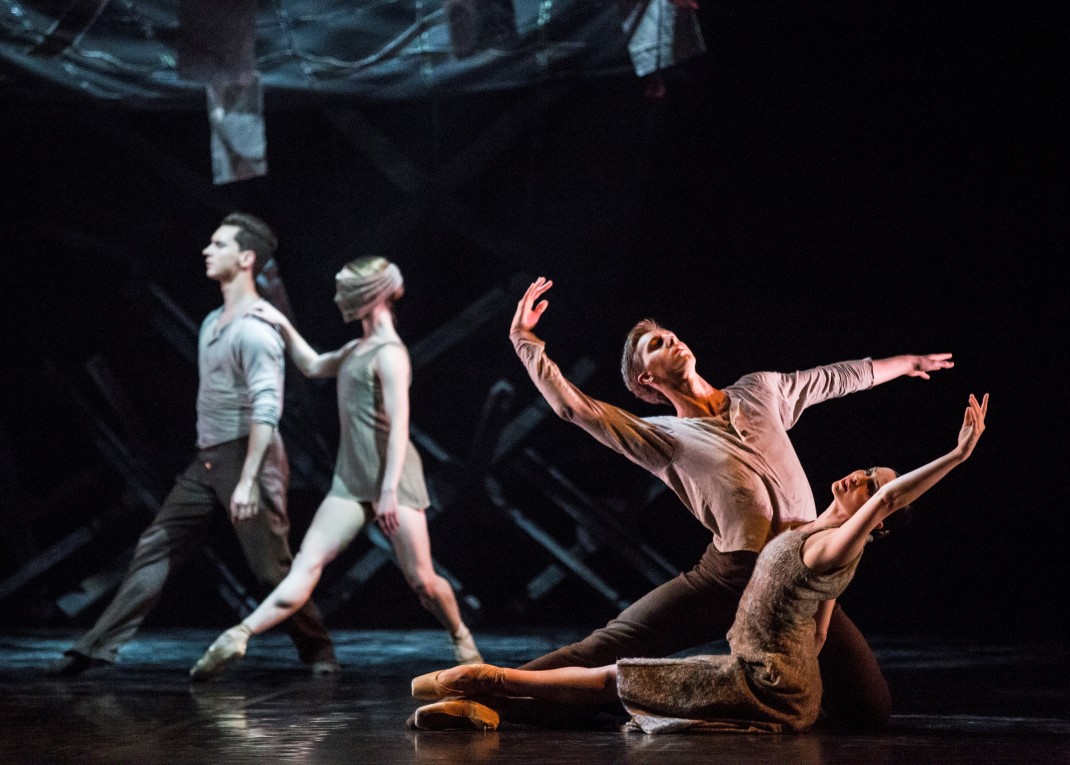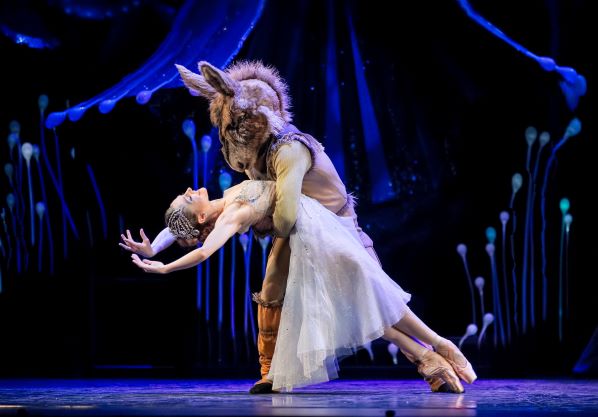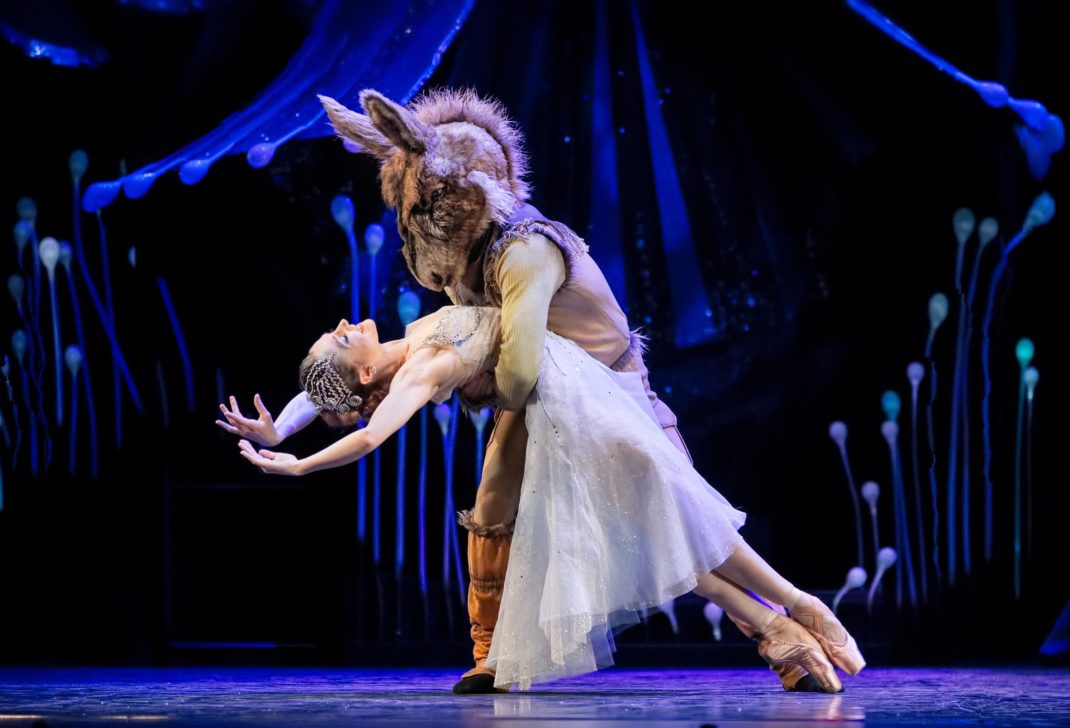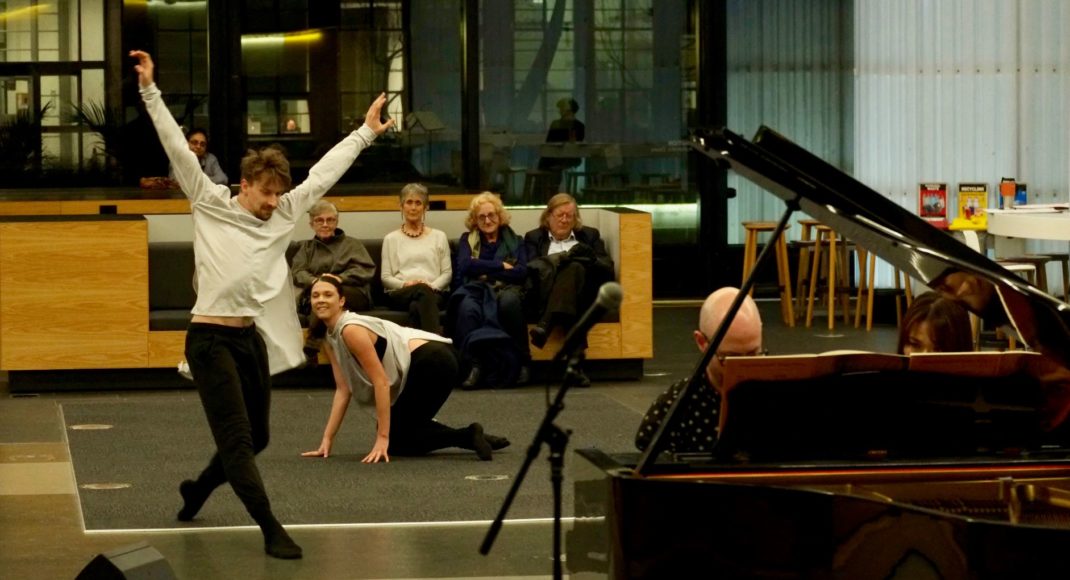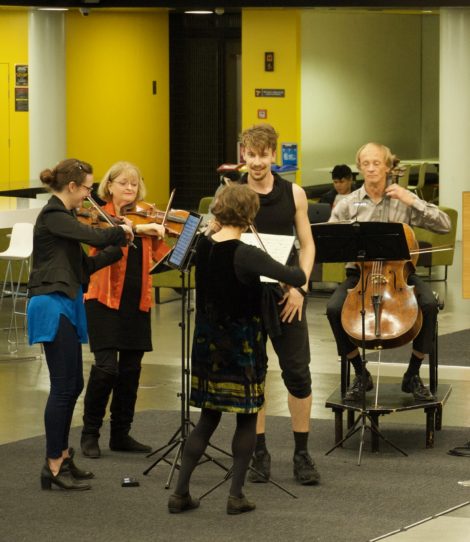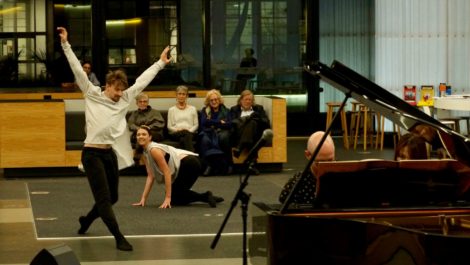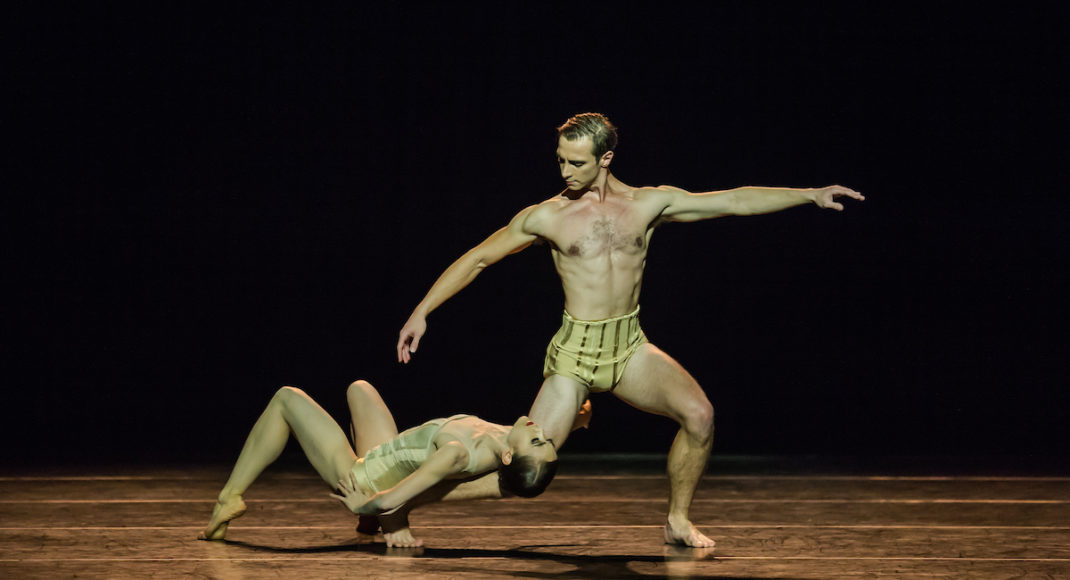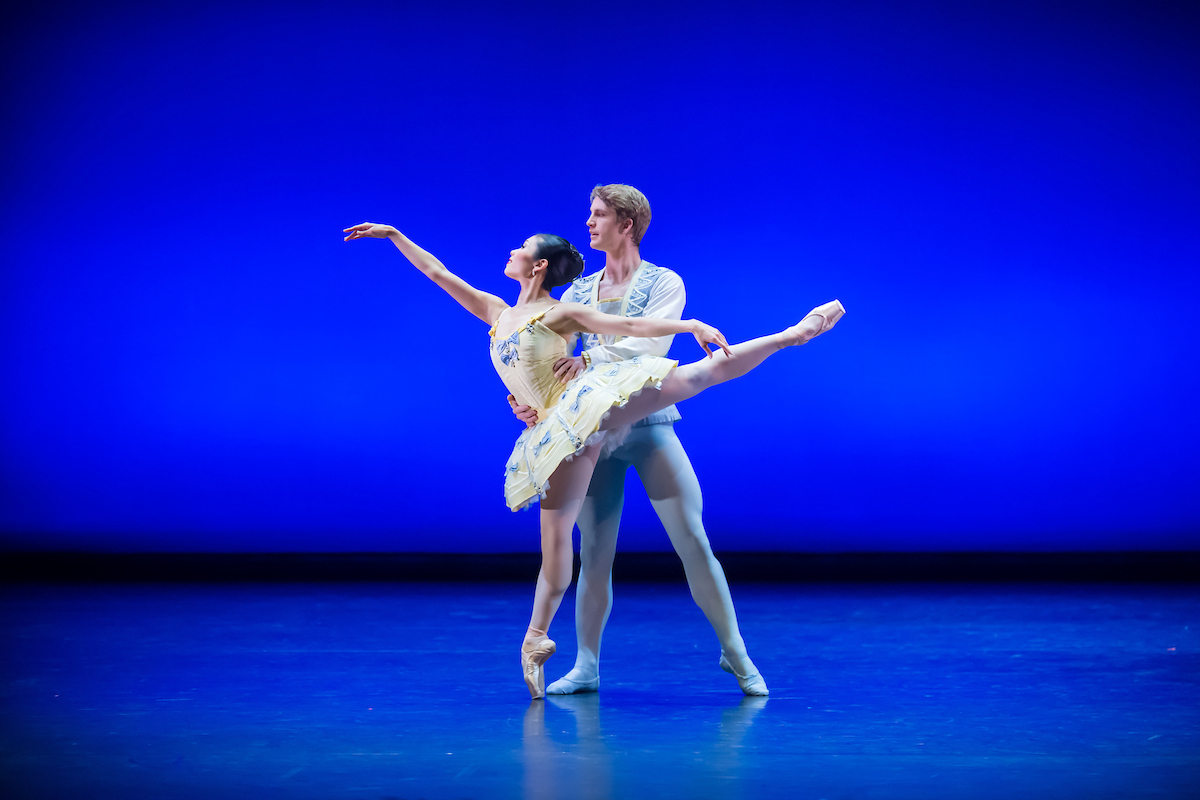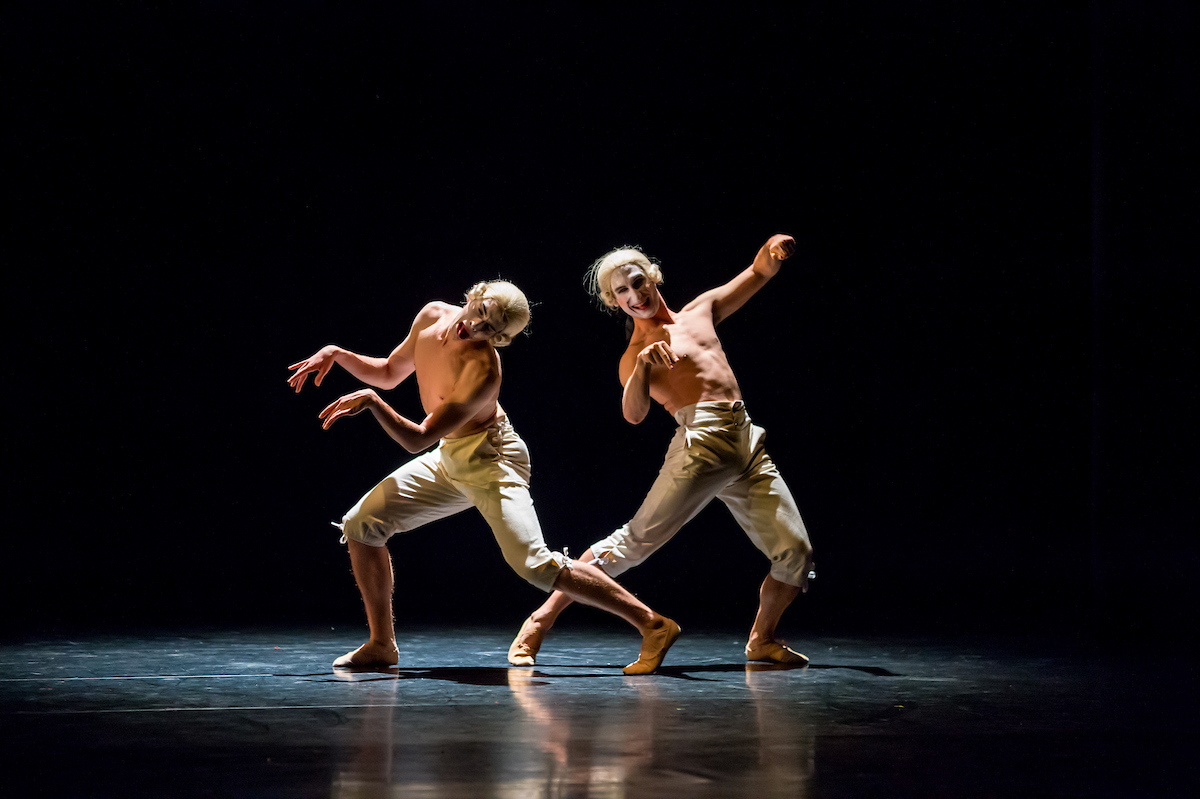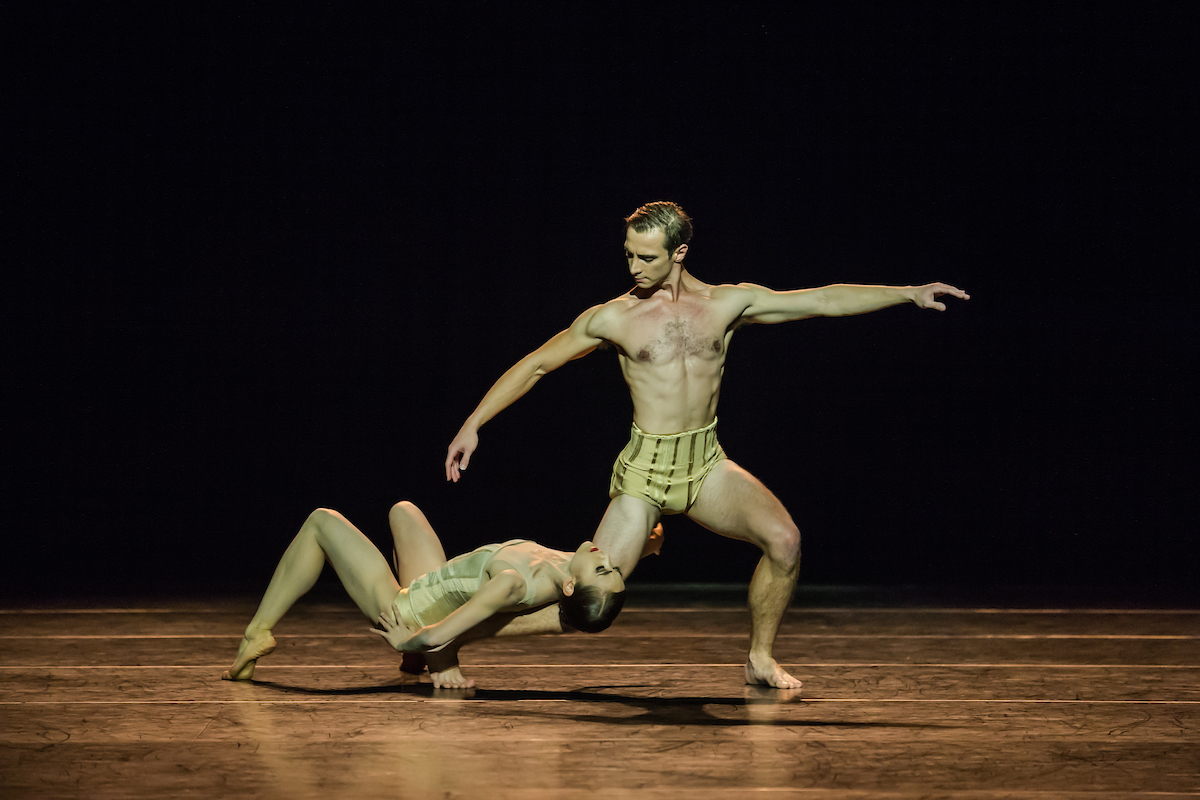15 March 2021, Michael Fowler Centre, Wellington
reviewed by Jennifer Shennan
This was an evening of triumph on several levels. Transfigured Night is the first of six concerts in Chamber Music New Zealand’s nationally touring programme for 2021. Audiences in ten cities will have the chance to witness a performance of light and colour, wit and freedom, deep beauty and poignant poetry, of music and dance making love. We don’t often get to watch that, and we won’t forget it.
The New Zealand String Quartet have earlier worked with choreographer Loughlan Prior in various projects, and their mutual trust and shared excitement is apparent in every quaver and quiver. That is what will have given lift-off to this project.
The Ides of March was the day Team Emirates New Zealand won two spectacular races in the America’s Cup series, in boats that fly above the water and turn slow pirouettes in high attitude—even those who know nothing about yachting can see that. The Fowler Centre is not a proscenium theatre space and it’s a challenge to stage dance there (it’s where in 1988 Nureyev performed, which proved a mistake). Here though a great triangular sail, white silk with patterns of colour, designed by dancer William Fitzgerald, is back lit and suspended high above the stage—an inspiration to preface the performance and shape the space.
The opening work was the premiere of a composition, I Danced, Unseen, by Tabea Squire. Laura Saxon Jones enters first, to silence—a curious creature, a lithe and hungry fox perhaps, who sniffs out and inspects the music stands and scores, what is all this about? what are these music scores? can you eat them? Hilarious. The whimsy and teasing continue as the musicians enter, wearing similar costumes as the three dancers, all of them echoing the patterns on the sailcloth overhead. There are naughty interferences from the dancers to the players and their instruments, but these musos are staunch, could play blind, and it would take a lot more than choreographed mosquitoes to throw them. It’s a darling and fun-filled opener.
The Dvorak String Sextet in A major, op.48, was superbly played, and the dancers continued in similar vein to find places in the music where they could actively, passively, openly or surreptitiously involve themselves. The three dancers had a million moves, yet the choreographic vocabulary and style were refreshingly free from clichés of ballet so often seen displayed elsewhere ‘just because we can’. They danced as individuals with personality and spirit, and the freedom that conveyed to the audience seemed liberating. Hardened chamber music followers with little prior exposure to dance may possibly have found it distracting from the music they have long known and loved well, but not those around me who giggled and applauded and loved it, as indeed did I. It was a commedia dell’arte romp, full of cheer and light, with inspired little fragments of Hungarian folk dance, dumka and czardas, caught in the many nimble rhythm and tempo changes. Two of those repeated movement motifs carried me back decades to pas and port de bras of the little Russian dance in RAD’s Grade 5 ballet syllabus I have loved ever since 1957, happy and grateful for the reminder.
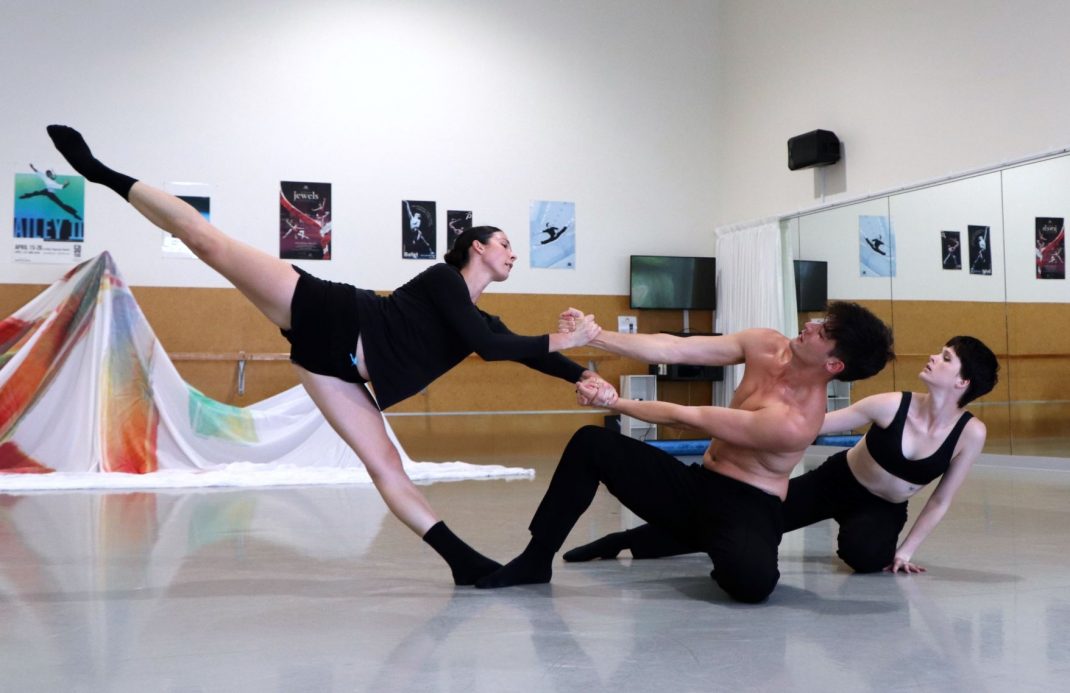
But peel back now for the major work of the second half, Transfigured Night, early Schoenberg. It proved a choreographic masterwork, and will position Loughlan Prior firmly on the international choreographic scene. It’s a safe bet that there will be future seasons of this work, both here and, when it becomes possible, abroad as well. There wouldn’t be another choreographed work anywhere that so centrally positions the intercourse between music and dance. In that sense it harks back to the masques of 17th century Europe, with costumed musicians traversing the stage, playing from memory, mingling with dancers and actors. At the same time Prior is in full control of a contemporary ballet vocabulary that moves like a fresh nor-easterly wind across our harbour. This skipper knows the local conditions.
The skilful absorption of two massive silk cloths, one red and one white, mirrored the theme of human physical interactions, a couple, a trio, a new couple, moving through their dreams and hopes and fears, their longing and love and loss. It moved the audience, aficionados or not, to responses—‘stunning … sublime … superb … breathtaking. When can we see it again?’ The central role played by Laura Saxon Jones was calm yet nuanced, poetic and powerful. It is good to see her dancing here again after several years absence.

The choreographer and the three dancers are all graduates of New Zealand School of Dance, credit to all concerned, and are now members of Ballet Collective Aotearoa. This new and courageous initiative, directed by Turid Revfeim, is a free-lance ensemble, to date only minimally funded [how courageous is that?], yet poised to offer the country a new and fresh approach to streamlined, clean, clear ballet for our time. The premiere season of BCA, in the Auckland Arts Festival [postponed a fortnight ago due to Covid lockdown] will now instead take place on 8 and 9 April, then in Dunedin Arts Festival on 16 April. We are holding our breath and we won’t be disappointed. The calibre of choreography, dance and music is already assured, with Poul Gnatt’s pioneering spirit in spades. Split Enz have a song—History never repeats. I wager they are wrong.
Hamish Robb’s superb program notes on music and dance interactions will help keep alive the memory
Composition: Tabea Squire, Antonin Dvorak, Arnold Schoenberg
Musicians: New Zealand String Quartet and colleagues
Choreography: Loughlan Prior
Dancers: Laura Saxon Jones, William Fitzgerald, Tabitha Dombrowski of Ballet Collective Aotearoa
Presenters: Chamber Music New Zealand
Jennifer Shennan, 16 March 2021
Featured image: Scene from Transfigured Night, Ballet Collective
Aoteraoa and New Zealand String Quartet and colleagues, 2021. Photo: © Jack Hobbs

